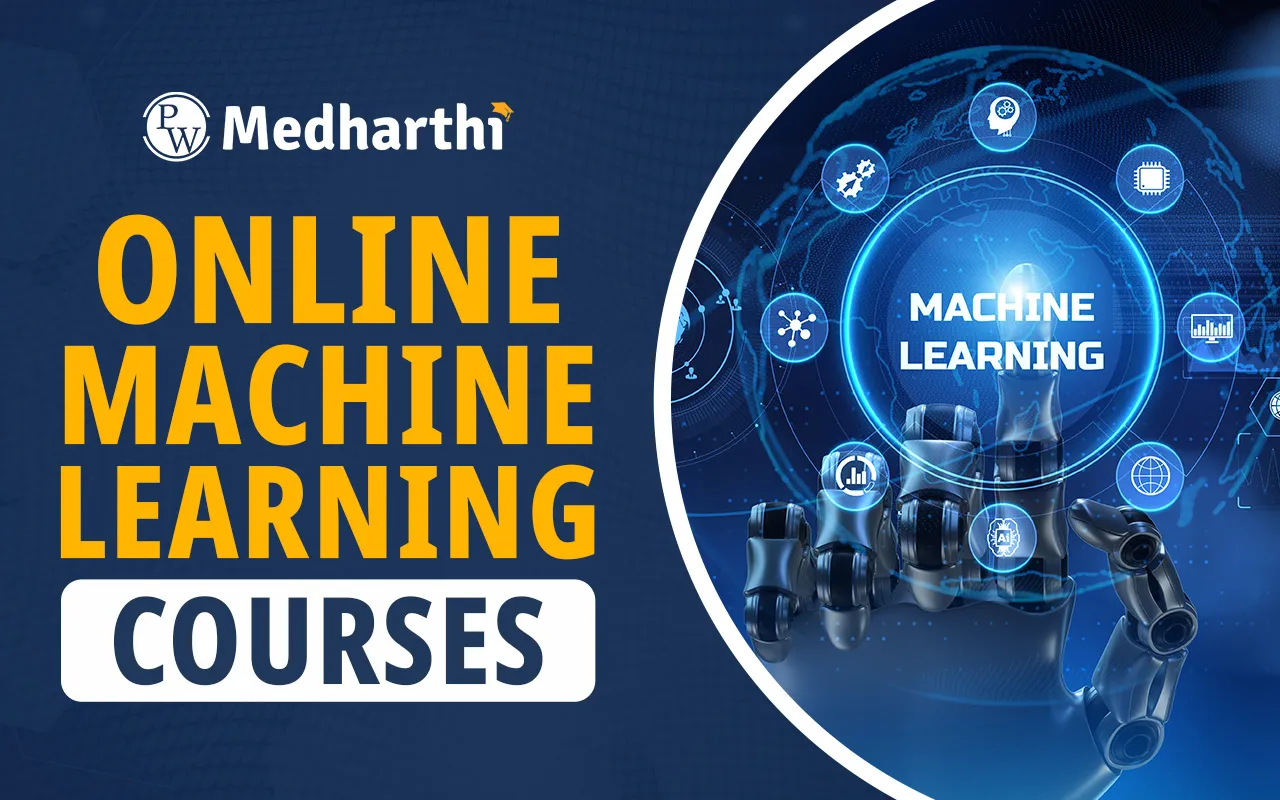
With the rapid development, the field of data science has emerged as a pivotal domain in various industries such as healthcare, finance, marketing, and technology. An Online Data Science Course has become a popular mode of acquiring the skills and knowledge necessary to enter this evolving sector. Provided here is a detailed understanding of what an online data science course entails, its benefits, core components, eligibility, career prospects, and how to choose a suitable program.
What is an Online Data Science Course?
An Online Data Science Course is a structured educational program delivered via digital platforms, enabling learners to gain theoretical and practical knowledge in data science without physical classroom attendance. These courses are designed to accommodate learners worldwide, providing flexibility in learning pace and location. Data science involves collecting, processing, analyzing, and interpreting vast datasets to aid decision-making and strategic planning. An online course typically covers a wide range of topics, including statistical analysis, programming, data visualization, machine learning, and big data technologies.
Core Components of an Online Data Science Course
An online data science course typically covers several fundamental components essential for building a strong foundation. This section outlines the primary subjects and modules included in such courses, which collectively prepare learners to analyze data effectively and solve complex problems using data-driven approaches.
1. Programming Languages
Programming forms the foundation of data science. The course usually introduces languages such as:
| Programming Languages | |
| Language | Purpose |
| Python | Widely used for data manipulation and analysis |
| R | Popular for statistical analysis and visualization |
| SQL | Used for database management and querying |
2. Statistics and Mathematics
Understanding statistics and mathematical principles is critical to interpreting data accurately. Key topics include:
-
Probability theory
Descriptive and inferential statistics
Linear algebra -
Calculus basics
3. Data Manipulation and Cleaning
Raw data often requires preprocessing to remove inconsistencies and prepare it for analysis. Techniques taught include:
-
Data wrangling
-
Handling missing values
-
Data normalization and transformation
4. Data Visualization
Effective visualization communicates findings clearly. Tools and libraries commonly covered are:
| Data Visualization | |
| Tool/Library | Description |
| Matplotlib | Python plotting library |
| Tableau | Interactive dashboard software |
| Seaborn | Statistical data visualization |
5. Machine Learning
Machine learning algorithms enable predictive analytics. Key learning areas involve:
-
Supervised and unsupervised learning
-
Regession, classification, and clustering techniques
-
Model evaluation and tuning
6. Big Data Technologies
Handling large datasets requires knowledge of specialized frameworks such as:
-
Hadoop
-
Spark
Online Data Science Courses
Online Data Science Courses offer flexible learning opportunities for individuals interested in mastering data analysis, machine learning, and statistical techniques. These courses provide comprehensive knowledge and practical skills through digital platforms, enabling learners to pursue careers in data-driven fields without the constraints of traditional classroom settings.
| Online Data Science Course | |
| Course Name | Key Topics Covered |
| Data Science Specialization | R programming, statistical inference, machine learning, data visualization |
| IBM Data Science Professional Certificate | Python, data analysis, data visualization, machine learning, SQL |
| Data Science MicroMasters | Probability, statistics, machine learning, data mining |
| Data Science and Machine Learning Bootcamp | Python, machine learning, deep learning, data visualization |
| Applied Data Science with Python Specialization | Python programming, data visualization, machine learning |
| Introduction to Data Science | Data exploration, data cleaning, statistics, visualization |
| Data Science Fundamentals | Data analysis, visualization, Python, business applications of data science |
| Complete Data Science Course | Data science basics, Python programming, statistics, machine learning, practical projects |
Duration and Mode of Delivery
The duration and mode of delivery of online data science courses vary widely, offering learners flexible options tailored to their schedules. This section explores typical timeframes and instructional methods to help candidates select courses that best align with their availability and learning preferences.
|
Duration and Mode of Delivery |
|
|
Course Type |
Duration |
|
Certificate |
3 to 6 months |
|
Diploma |
6 to 12 months |
|
Degree Programs |
1 to 3 years |
Online Data Science Course Admission 2025
Online Data Science Course Admission 2025 is structured to offer accessible and flexible entry into the field of data science for learners from diverse educational and professional backgrounds. Admission requirements typically include a basic understanding of mathematics, statistics, and computer literacy. Most institutions and platforms provide a straightforward application process conducted entirely online, often with rolling admissions or multiple intakes throughout the year. Applicants may need to submit academic transcripts and identification documents, while some programs may include a short assessment or statement of purpose. These courses are designed to accommodate working professionals, students, and career changers seeking data-driven competencies.
Benefits of Pursuing an Online Data Science Course
Pursuing an online data science course offers numerous advantages, including flexible learning schedules, accessibility from any location, and the ability to gain industry-relevant skills at one’s own pace. This section highlights the key benefits that make online courses a viable option for aspiring data science professionals.
| Benefits of Pursuing an Online Data Science Course | |
| Benefits | Description |
| Flexibility | Allows learning at one's own pace and convenience |
| Accessibility | Available to candidates globally, removing geographical barriers |
| Cost-Effective | Often more affordable compared to traditional classroom courses |
| Practical Exposure | Many courses offer projects and real-world case studies |
| Updated Curriculum | Rapidly evolving content that reflects current industry trends |
Career Opportunities After Completing an Online Data Science Course
Completing an online data science course opens doors to a variety of professional roles across different industries. This section outlines the diverse career paths and job profiles available to graduates, highlighting how the acquired skills can be applied in the workforce.
| Career Opportunities | |
| Job Role | Description |
| Data Analyst | Analyzes data to extract actionable insights |
| Data Scientist | Builds predictive models and advanced analytics |
| Machine Learning Engineer | Designs algorithms that enable machines to learn |
| Business Intelligence Analyst | Provides strategic insights using data |
Technologies and Tools Covered in Online Data Science Courses
Proficiency in specific technologies and tools is crucial for practical data science applications. This section provides an overview of the common software and programming environments covered in online data science courses, which equip learners with hands-on experience to handle real-world data challenges.
| Technologies and Tools Covered | |
| Tool/Software | Purpose |
| Jupyter Notebook | Interactive coding and visualization environment |
| Excel | Data manipulation and basic analysis |
| SAS | Advanced analytics and statistical software |
| Power BI | Business intelligence and reporting |
Challenges in Pursuing an Online Data Science Course
While online data science courses offer convenience and accessibility, they also present certain challenges. This section discusses potential obstacles learners may encounter, including motivation, time management, and technical issues, and suggests strategies to overcome these difficulties for successful course completion.
-
Maintaining motivation without physical classroom engagement:
Without in-person interaction, staying motivated can be challenging. Learners must cultivate self-discipline and set personal goals to maintain focus and commitment throughout the online data science course. -
Managing time effectively to meet deadlines:
Online courses require proactive time management. Students must balance study schedules with other responsibilities, plan tasks carefully, and avoid procrastination to ensure timely completion of assignments and course modules. -
Limited face-to-face interaction with instructors and peers:
Lack of direct interaction can affect immediate feedback and collaborative learning. Students need to actively participate in virtual forums, use communication tools, and seek support to compensate for reduced personal engagement. -
Ensuring access to reliable internet and compatible devices:
Successful online learning depends on stable internet connections and suitable hardware. Interruptions or technical issues can hinder participation, so learners should ensure they have consistent access to necessary digital resources.
| Online Degree Important Links | |
| Online MCA Programs in India | Online BCom Course |
| Online MCA Course | Online Degree Programs |
| Regular Degree Vs Distance Degree | Online BA Course |
Online Data Science Course FAQs
What is an Online Data Science Course?
How long does an Online Data Science Course typically take?
What career opportunities are available after completing an Online Data Science Course?
Which tools and technologies are commonly taught in these courses?
What challenges might I face during an Online Data Science Course?










